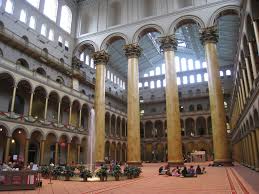Nov 18 2017 - Jan 6 2019
Washington, DC

Unprecedented shifts in demographics and lifestyle have redefined American households, but our housing has simply not kept pace. Technology, the desire for smart density and environmental sustainability, and demands for healthy living all cry out for 21st century solutions.
Almost 30% of American households consist of adults living alone, a growing phenomenon across all ages and incomes.More and more, adults pool resources and share dwellings just to find suitable living conditions.
We face a crisis in affordable housing, placing an unprecedented burden on low-income families. More than one in four renter households (11.4 million) spend more than 50% of their income on rent.
Multi-generational households are on the rise. Young adults are staying home longer or moving back in with their parents. Adults are opening their homes to their aging baby boomer parents, while immigrants often prefer to live in larger, multi-generational households. 87% of adults aged 65 and older want to stay in their current home and community as they age. Yet, housing is often poorly adapted to changing needs, resulting in poor health outcomes for our seniors.
There’s good news. A groundswell of developers, architects, and interior designers, allied with housing advocates, policy makers, and activists, are proposing exciting, flexible answers for these evolving lifestyle needs. These innovations are at the center of the exhibition, Making Room: Housing for a Changing America.
Making Room, replete with surprising architectural and design improvements, puts a needed spotlight on cutting-edge and efficient approaches such as micro apartments in Washington, D.C., and New York City, accessory “alley flats” in Austin, and shared housing in San Diego. Models, plans, and images will showcase some of these alternative options and their effects on the housing market in those communities.
The exhibition’s centerpiece, a full-scale, flexible dwelling will further illustrate how a small space can be adapted to meet many needs. It will comprise two distinct living spaces that could be used independently or combined to form a larger residence. On its own, the smallest space could be configured as a micro apartment. These rooms will be redesigned twice to reflect three different housing scenarios: roommates, an extended family, and a retired couple.
Credit: Exhibition overview from museum website
Image: 14-story affordable housing high-rise, The John and Jill Ker Conway Residence, 1005 North Capitol Street NE Washington DC
Exhibition Venues & Dates
Nov 18 2017 - Jan 6 2019
Washington, DC
